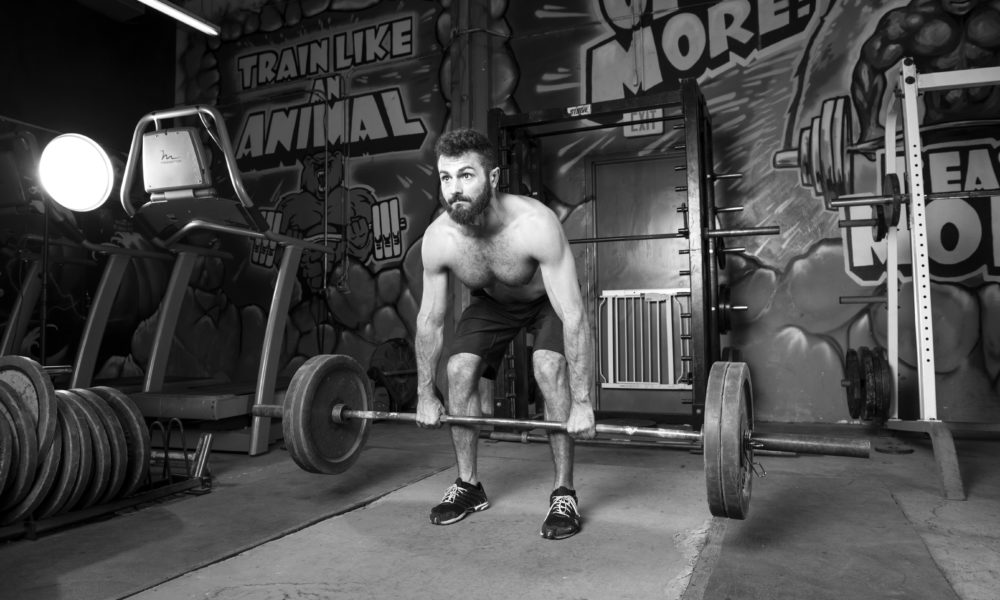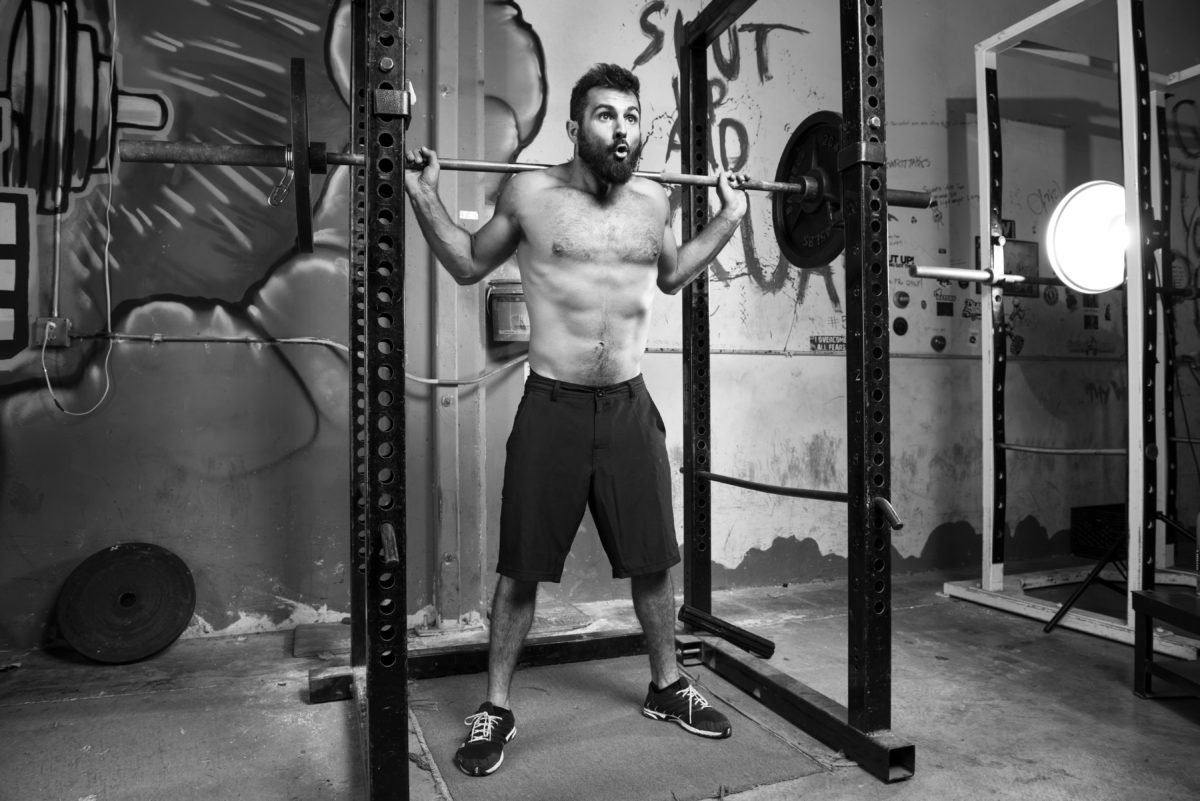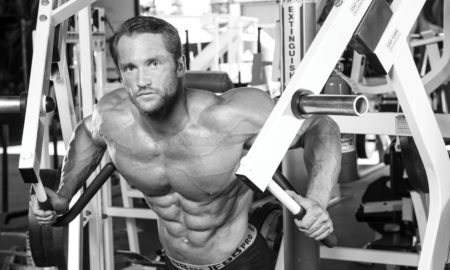

A simple and effective program for the athlete interested in well-rounded strength and conditioning.
By Eddie Avakoff, owner of Metroflex LBC
You’re a hybrid athlete. You lift heavy things, run long distances, and do just about everything else in between. Given the broad range of physical demands required, it’s sometimes difficult to determine which exercises are worth our valuable time in the gym.
I would never deem any exercise a “waste of time,” but there definitely are some movements that elicit far more benefit and carryover than others: squats, deadlifts, and other primal functional movements that incorporate the whole body. As nice as it would be to cap off our delts and blow up our calves, our goal is not to isolate every single muscle.
So how does a hybrid athlete train during his/her weekly program that ensures progress in both the strength and conditioning attributes without spending all day in there like a hamster on a wheel?
This is a very simple yet effective weekly program designed to aid both strength and conditioning. The program is on a weekly cycle that involves six days of work, followed by one day of rest. It alternates between a day of strength training, followed by a day of conditioning. Active recovery is included, but almost every day you will be doing something. Afraid of the lack of rest? You’re a hybrid athlete. Toughen up, buttercup.
Let’s begin by dissecting the strength aspect of this weekly program. Strength days fall on Monday, Wednesday, and Friday. Each strength day will repeat three main functional lifts: squat, bench press, and deadlift. On each day, only one of the three lifts will be maximal (2 to 3 sets of 1 to 3 reps at 95 to 100 percent). The other two remain submaximal (4 sets of 7 to 10 reps at approximately 80 percent).
The benefit of engaging primal barbell lifts, even at submaximal weight, ensures rapid tendon growth. Muscle grows 17 times faster than tendons. Many times a performance plateau happens because their muscles have outgrown their tendons. Light barbell work allows for these tendons to catch up. So even if the weight isn’t always at max effort, there is still a lot of benefit from submaximal barbell work.
Monday calls for maximal squats, followed by sub maximal bench press, and deadlifts. So, Squats would look like 2 to 3 sets of 1 to 3 reps at nearly 100 percent max effort. Next is bench press at submaximal effort (4 sets of 7 to 10 reps). And finally, submaximal deadlifts (4 sets of 7 to 10 reps). Seeing that squats are the focus of Monday, after submaximal deadlifts, head right into more legs: leg press, quad extensions, hamstring curls, and calf raises. For these standard hypertrophy movements, abide by a set/rep scheme of 4 x 12 to 15 for each movement.
Wednesday is the same structure as Monday, but the emphasis is centered around bench press, chest, and triceps. Begin Wednesday by completing submaximal squats first. After, go right into max effort bench press. And finally, submaximal deadlifts.
After Wednesday’s deadlift work, transition back to chest. Since bodyweight movements go a long way in our programming (especially when weighted), begin with dips. Complete 4 to 5 sets of max reps for each set. Add a weight vest if you can. After dips, complete the same rep scheme for push-ups. And finally, blast triceps (at least two different movements) for 3 to 4 sets.
Friday, like Monday and Wednesday, begins with squat, bench, and deadlift. Only this time, squat and bench are submaximal, and the deadlifts are performed at max effort. After deadlifts, roll into more back with cable rows first (4 x 20), and then pull-ups (4 to 5 sets of max reps). Again, if you have a weight vest to add to your pull-ups, then use it. After pull-ups, hit biceps (4 x 15) to wrap up a solid week of strength.

Now onto the conditioning side of the program:
Tuesday would fall on the day after squats and a solid leg workout. In order to reduce soreness and aid recovery (while still making performance gains), begin the day with an easy recovery jog. Next, take this day to complete one of the following:
1) Metabolic conditioning: circuit training/interval training
2) Short run (one to two miles)
3) Explore another cardio-related sport for the day: (wrestling, swimming, and soccer are all great ways to get your cardio in without having to mindlessly run forever on a treadmill)
By Thursday, you should be pretty tired, having already trained three days in a row (two of which being strength days). With max effort deadlifts right around the corner, it’s important to treat Thursday as an active recovery day. That means stretch, foam roll, take a yoga class, or even get a massage. Your body is a machine and rest is an essential part of the mechanical upkeep. If there were an aspect of cardio that I’d pursue, it would be swimming. Swimming is non-impact and offers a dynamic range of motion—allowing one to stretch all while benefitting from some amazing cardio (swimming does wonders for the lungs).
Finally, this brings us to Saturday, the final day of the training week. Seeing that your body is likely sore from the past five days of work, especially heavy deadlifts the day before, it’s a tall order to program a long-distance run (six miles or more) on Saturday. But you’re a tough SOB who doesn’t back down from anything, right?
Saturday is an ideal day in the program to issue a long run for a few reasons:
1) There’s a complete rest day tomorrow (Sunday).
2) Long-distance running can be very relaxing and meditative, a perfect activity for Saturday.
3) Long-distance running is arguably the most aerobic sport (depending on intensity and duration). And I think there’s no better day to wrap up the week of hard training than with a long-distance run. We start the training week heavy (anaerobic) and end the week light (aerobic).
Seeing that the long-distance run will likely loosen up and stretch out your legs and back, long-distance running the day after heavy deadlifts should also make it a bit easier to squat come Monday.
So there you have it:
Monday = Strength/Squats/Legs
Tuesday = Conditioning/Met Con/Circuits
Wednesday = Strength/Bench/Chest/Triceps
Thursday = Conditioning/Active Recovery/Swim
Friday = Strength/Deadlifts/Back/Biceps
Saturday = Conditioning/Long-Distance Cardio
Sunday = Complete Rest Day
This weekly program offers a nice blend of strength and conditioning all in the same week. There certainly is considerable attention to the primary lifting patterns: squat, bench, deadlift. There is also attention to both realms of cardio: anaerobic and aerobic. Despite its six-on, one-off work split, there is ample attention paid to recovery (and even mobility).
All in all, if you’re looking for a solid strength and conditioning program to optimize your hybrid athleticism, look no further. This demanding program is bound to kick your ass and leave you wanting more. IM
| Monday | Tuesday | Wednesday | Thursday | Friday | Saturday |
| Strength | Conditioning | Strength | Conditioning | Strength | Conditioning |
| SQUAT
Bench Deadlift |
Met Con Circuits Intervals |
Squat
BENCH Deadlift |
Swim | Squat Bench DEADLIFT |
Long Distance Run |
| Legs | Short Run | Chest | Active Recovery | Back | |
| Active Recovery | Triceps | Stretch | Biceps |
On Monday, Wednesday, and Friday the capitalized exercise is the primary lifting pattern for that day. For example, on Monday the squats are the primary lifting movement (done at about 90-100 percent max effort). Subsequently, legs are what we will pursue after the secondary primal strength movements (70 to 80 percent), which are bench, then deadlift.






















You must be logged in to post a comment Login